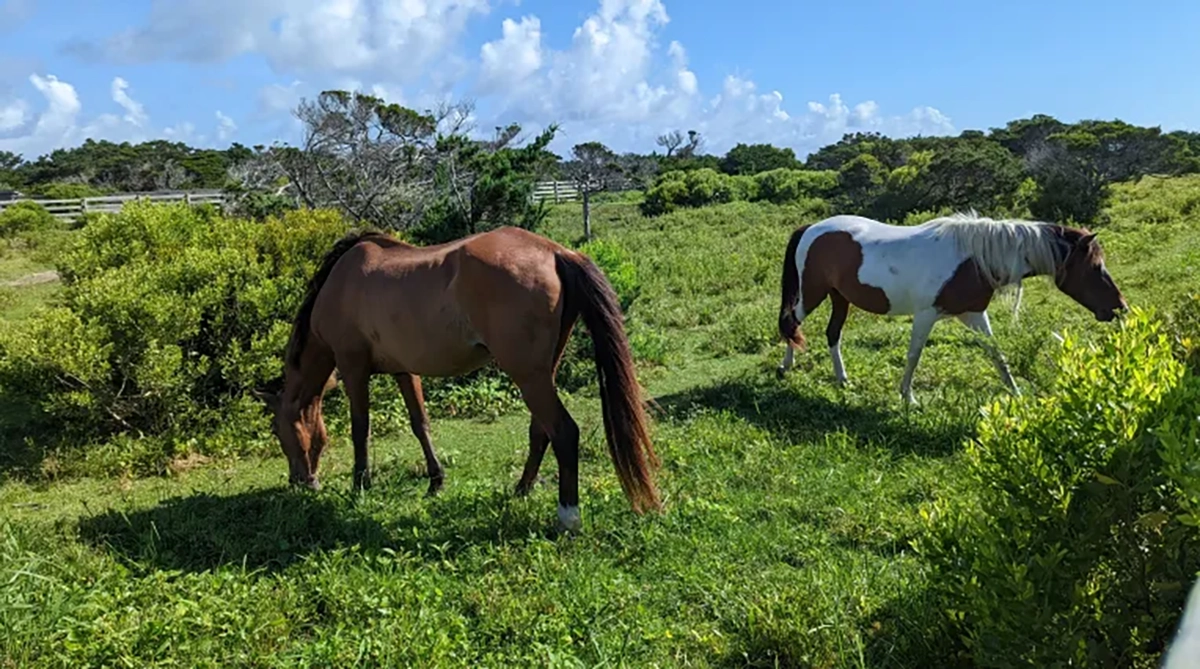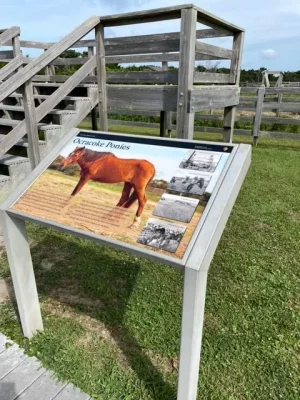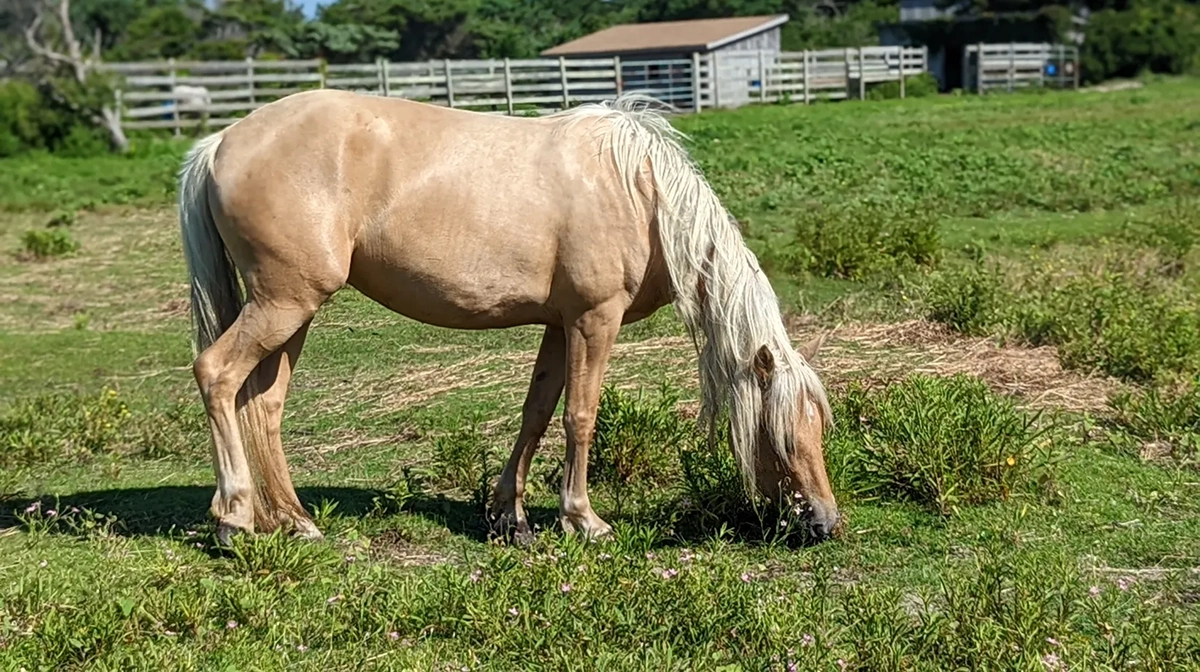
Reprinted from the Ocracoke Observer
Andrew Hawkins is concerned that Ocracoke might lose an iconic feature — the Banker pony herd — if more foals aren’t born soon.
Supporter Spotlight
Hawkins, a part-time islander who, with his wife, volunteers as a National Park Service campground host, also volunteers with the care of the 14-member pony herd, corralled at the center of the island.
“We’re just worried that if they don’t do something, we’re going to lose the herd if we don’t breed them,” he said. “We haven’t had a foal in four or five years.”
These Banker ponies are a special breed with a different number of vertebrae and ribs.
The herd has two stallions, one gelding, 10 mares and one filly. The mares range in age from 4 to 36 years.
“At least five are too old to breed and one too young,” Hawkins said. “So that’s five of breeding age and because of their relationship to the stallions we must discount one. That leaves only four mares eligible to breed, but father/daughter and brother/sister relationships make it complicated.”
Supporter Spotlight

Also complicating increasing the herd is the lack of a plan by the NPS, who manages the herd.
The Ocracoke ponies are part of an Outer Banks attraction of free-roaming horses, which are descendants of those that survived shipwrecks hundreds of years ago.
On Shackleford Banks in Cape Lookout National Seashore south of Ocracoke, and on the Currituck beaches in Dare County to the north, the horses still run free.
On Ocracoke, the herd ran free until the National Park Service bought almost all of the island in the 1950s.
When N.C. 12 was paved in 1957, permitting vehicles to drive 50 mph, the National Park Service corralled the ponies for their own safety, creating the 180-acre pasture area that in 1959 was officially named the Ocracoke Pony Pens.
“They’re managed much more like a domestic herd at this point,” said David Hallac, Cape Hatteras National Seashore superintendent. “We manage it as a cultural resource or historic resource. There are questions if that is the right management model. So, we need to develop this plan.”
Meaghan Johnson, chief of resource management and science with the national seashore, said the park first needs to receive funding to devise the plan. She said they applied for funding this year from the regional office but did not receive it. The most recent plan was from 1995.
A new plan would include the history of the ponies, the current herd size and their ages, their genetics and how a herd aligns with park service policies, she said.
Sea level rise and the groundwater sustainability in the area of the pens are also on the radar.

“Looking at the sea level rise projections, do we need to be thinking about the pen where they are currently?” she said. “I think we need to understand where we’ve been and to look at it in a broader picture before we make any decisions such as continuing breeding and what is the right number for that herd.”
Johnson doesn’t have the answers to that but hopes a management plan will yield those.
If they get funding, developing the plan would probably take a year.
In the meantime, a priority this year, she said, has been assessing the status of the pony pen facilities, the fencing, getting some new gates and managing the vegetation around the pens.
After the Ocracoke Light Station, also owned by the park service, the Ocracoke ponies are one of the top island attractions.
“The ponies have always been of interest to tourists because they’ve been here so long,” said Helena Stevens, executive director of the Ocracoke Township Tourism Development Authority. “The state tourism bureau gets a lot of inquiries and sends them to us.”
As of now, the Ocracoke herd consists of the following horses:
- Adults: Winnie, age 4, Jobelle, 5, Hazelnut, 7, Captain, 9, Rayo, 10, and Paloma, 12.
- Middle-aged: Jitterbug, 14, Sacajawea, 15, and Lawton, 18
- Seniors: Maya, 22, Luna, 24, and Easter, 28.
- Geriatric: Oops, 33, and Lindessa, 37.
This story is provided courtesy of the Ocracoke Observer, a newspaper covering Ocracoke island. Coastal Review Online is partnering with the Ocracoke Observer to provide readers with more environmental and lifestyle stories of interest along our coast.







